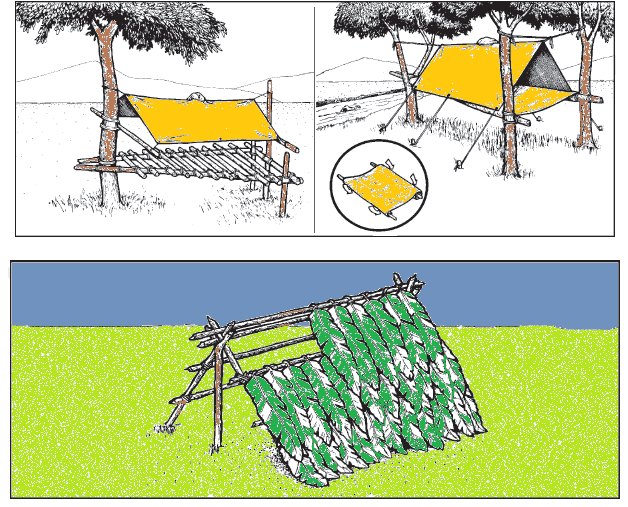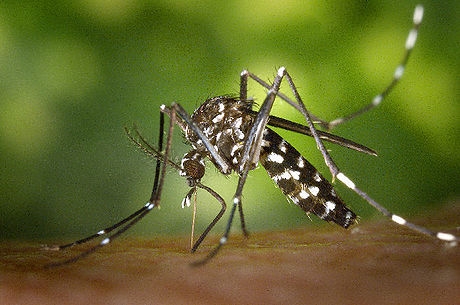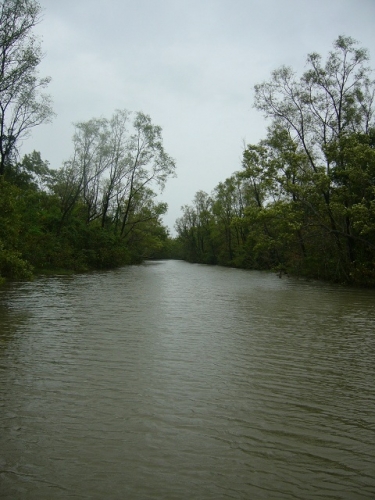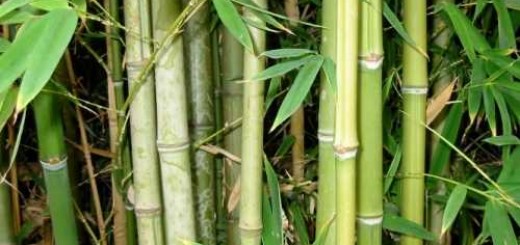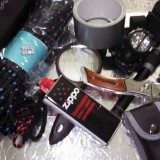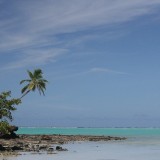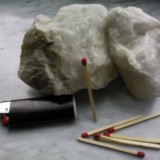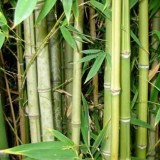HOW TO SURVIVE IN THE RAINFOREST
HOW TO SURVIVE IN THE RAINFOREST
The basic rules to survive in a rainforest.

Rainforests are famous for the long rains, in average the precipitations are of 2 meters per year.
In the rainforests live a multitude of insects, animals, plants and microorganisms. About two-thirds of known plant and animal species on the planet live in these forests. There are so many species that today we can still discover new ones.
It was estimated that to identify all insects of the Amazon forest are needed at least 3,600 years, this figure comes from the fact that there are very few people who work in this sector. Think that only in one tree were counted over 70 different species of ants.
Life in the rainforest is limited to a few indigenous communities, although the place is full of food and water, the survival in these areas is almost impossible unless you have the knowledge and the necessary skills.
Many soldiers who were lost in these areas have not been unable to return home alive.
ORIENTATION IN THE FOREST:
Orientate in the forest is very difficult, but it’s very easy to get lost, the dense vegetation makes you lose the sense of distance and size.
The thick blanket of leaves and branches sometimes prevents us from seeing the sky, instilling in us a sense of loss.
To get a better idea of the area and the direction to take, you can climb up on the top of a tree.
For a claustrophobic being in a rainforest is like being in a nightmare, even a normal person would feel crushed by the sense of oppression and disorientation that infuses the forest.
The walking in the jungle is always very slow, it takes long times to cover small distances.
Depending of the zone, you can proceed to less than a 100 meters (0.06 Miles) per hour.
HOW CAN I SURVIVE IN THE RAINFOREST?
Walking in the forest is really difficult. The soil is constantly wet and slippery, the surface on which walking is formed by leaves and trees in decomposition and by very mud.
Under these conditions sprain an ankle or break a leg can be very easy.
We must be careful to snakes, it is very easy to mistake some branch for one of them. Usually snakes don’t attack humans unless they feel threatened. If while we walk stepping on a snake, probably it will react by biting our leg.
The humidity in a rainforest is unbearable (in the warmer seasons it can be reach values over the 98%).
If the temperature is around 30 degrees, you will dehydrate quickly, because of the high humidity you will sweat a lot.
Get used to sudden and heavy rains even several times a day.
In the rain forest is normal to be constantly wet from head to toe, both for the rains that for moisture.
USEFUL ADVICE:
- Warning! In the forest the dangers also come from above.
-
The most dangerous animals in these areas are scorpions, mosquitoes and snakes, of the latter there are many species many of which are poisonous. Order not to lose the orientation if you find a river follow it, could bring you down to the sea or to civilization.
-
When you walk in the forest it is always advisable to bring a machete to make their way in the dense vegetation. The machete can also come in handy as a weapon of defense and hunting.
-
Never walk barefoot. Cover tightly feet and legs because the thorns, the ants and other small insects could cause injury, that in an environment like this, it would infect immediately. An adequate protection can protect you against spider bites and stings of scorpions and snakes.
- If you’re following a river and notice that the sound of water becomes increasingly strong, be careful because you might be close to a waterfall.
- If you want to go over an obstacle (such as a waterfall or a slope) you can take advantage of the lianas, pull them with all your might until they are detached from the tree, then maybe you use them as ropes thus combining more than one to lengthen it.
- The lianas are very durable and can be helpful for a thousand purposes.
WATER:
If you find a river, you must be very careful to drink its water. Always boil water if you can.
Signals to see if the water is drinkable:
- It flows quickly (it’s not stagnant).
- It appears clear and clean.
- It doesn’t emanate a strange smells.
- There are small animals like stoneflies and shrimp that swim inside.
Before swallowing the water, wet your tongue to taste it. If the water is odorless and tasteless, you can drink it.
Usually where the animals drink, the water is definitely harmless even if there isn’t the assurance that is potable.
You can ease the sense of thirst, chewing a blade of grass or sucking a wet pebble.
The water can transmit any sorts of viruses and microbes. The water is the leading cause of diarrhea and diseases in the forest. When you venture into these areas it is always better to bring a supply of mineral water, water purification tablets or a pot to boil water.
Water purification tablets: link.
In these areas the diarrhea attacks can happen very easily, always bring some drugs for dysentery.
The diarrhea dehydrates the body and consumes the dietary minerals, increasing the risk of having a heat stroke. In a humid and hot environment such as the rainforest this is a lethal combination.
There are several plants that you can use to restore your belly, most of the medicines on the market are created using plants present in rainforests.
FOOD:
The rain forest doesn’t provide enough food to survive, but doing eye to detail you can find something.
Avoid efforts to hunt, look for animals or build traps, you can eat the vegetables that the enormous flora provides.
You can eat fruits fallen from the trees, leguminous plants, coconuts, palm shoots, the roots of the vines…
The variety of foods that can be found in the jungle are countless: banana, pineapple, figs, mango, peanut, avocado, millet, rice, sugarcane, papaya, various berries, wild fruits, dates palm, palm shoots, larvae of insects and termites, wild honey, crickets, ants eggs, caterpillars (those without hairs), snakes (without head, skin and intestines), lizards, bats, whitefish, eels, shrimp etc…
If you find a frog don’t eat it, it could be toxic and poisonous, even more so if the skin have a too flashy and brilliant color.
Do not ever eat mushrooms, could be toxic or poisonous, their nutritional intake is so low, that even if you are experienced mushroom not worth the risk.
If you can build a bow you could use the venom of scorpions, snakes or frogs to make poison arrows.
Often the plants that contain milky juice are poisonous.
If in the night you find yourself near a big river you can fish using the light of a torch.
To build a torch, take a stick and wrap around it a palm bark with the camphor resin so that, once fired, it continues to burn.
In the night, fishes are more docile. They are attracted by the light sources, taking the torch near the water surface the fish will approach, take advantage of the time to hit them with a wood weapon, when have been stunned grab them quickly.
Termites are edible, are very small but they give a lot of protein, for the same quantity even more than beef and fish. You have to eat a lot of termites to get a decent meal.
NIGHT AND SHELTER:
The worst moment when you get lost in the jungle is the arrival of the night. At the equator the dark hours and the hours of light are equal.
The night in the forest suddenly comes, you have to build a shelter before it gets dark.
To build a shelter always choose an elevated area.
It is very important when you can, make a fire, preferably smoky to remove mosquitoes and other insects.
Mosquito bites, in addition to being very annoying, can transmit diseases such as malaria and dengue fever.
Sometimes light a fire in the rainforest can be very difficult, because of the continuous rains and to the difficulty of finding dry woods.
When you light a fire, built over it a small roof using the broad leaves of the palm trees, so that the rain does not extinguish it immediately.
Unless you have a lighter, a match, a flint or a tinderbox you can use the lens of the glasses, the watch crystal, a bottle bottom, a piece of glass, or anything that may concentrate the sun’s rays on the tinder, always that the sky isn’t covered by the forest.
You can start a fire using the famous bow drill.
For the shelter, avoid the dry river bed, be careful to ant nests and caves (for the presence of wild animals).
Not build the shelter on the trail but slightly shifted, because in the night it could be visited by predators.
The first thing to do to organize the shelter to the ground is cleaning the surrounding land from weeds, branches and leaves so that it is as uniform as possible, to do that you do not use your hands but a stick.
The ideal is to make a hammock with lianas and then hook it to two trees.
To shelter from heavy rains you can build a roof over the bed where we will rest, using large palm leaves or banana.
Where possible you can build a raised shelter exploiting the fork of a tree building a platform with reeds and branches.
If you find a nest of termites you can burn its dry stools, the smoke produced will be an excellent mosquito repellent.
NAVIGATE IN A RIVER:
If you find a fairly wide river you can build a raft to move faster through the forest.
In a forest, wood to build a raft do not missing! You can use bark and lianas to tie the various trunks.
If while surfing in the river you see mangroves around you, it means that you are leaving the jungle and you are approaching the sea. If the current becomes very strong left immediately the raft and walk up the coast, if you allow yourself to be carried away by the current you might be dragged out to open sea.
